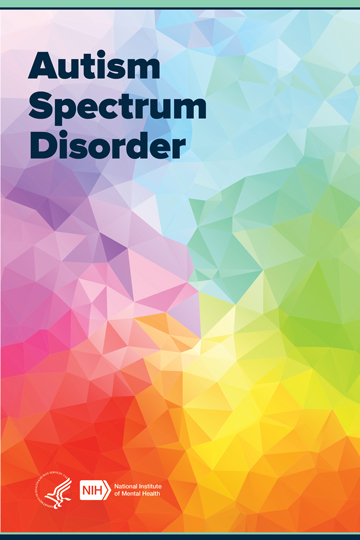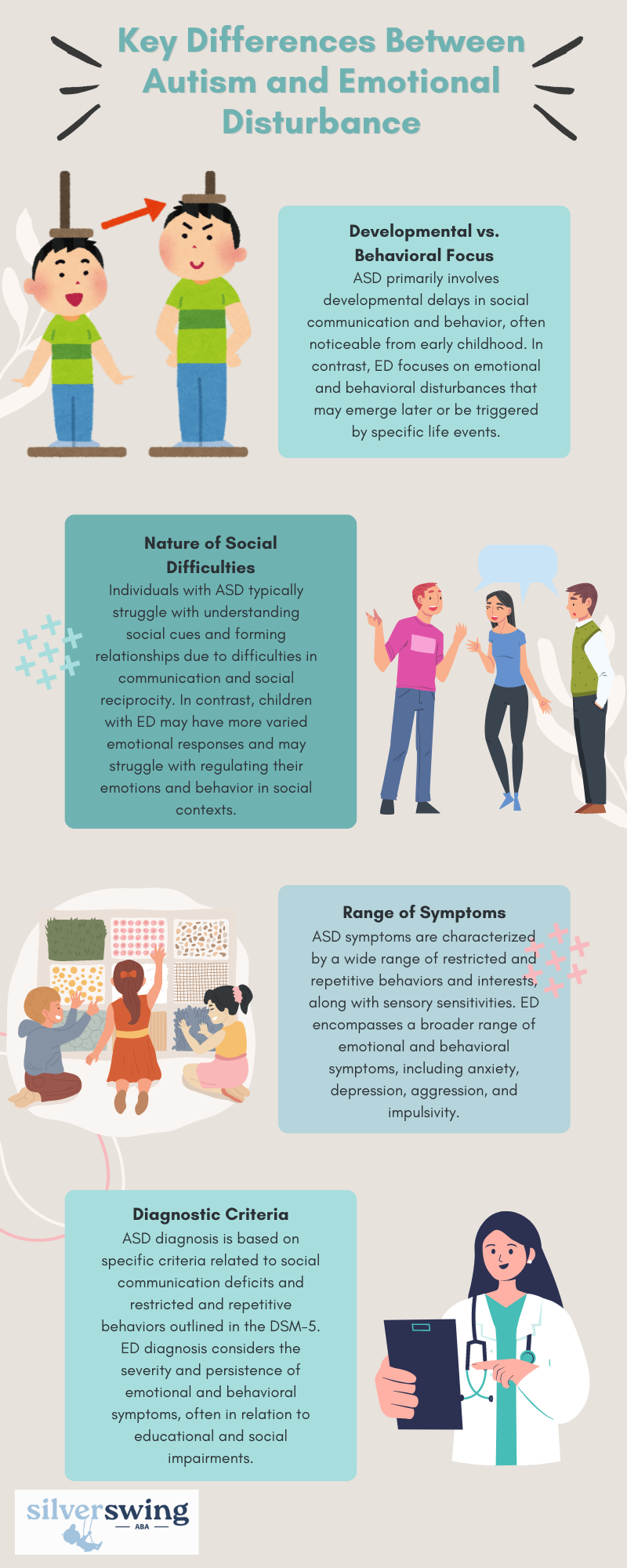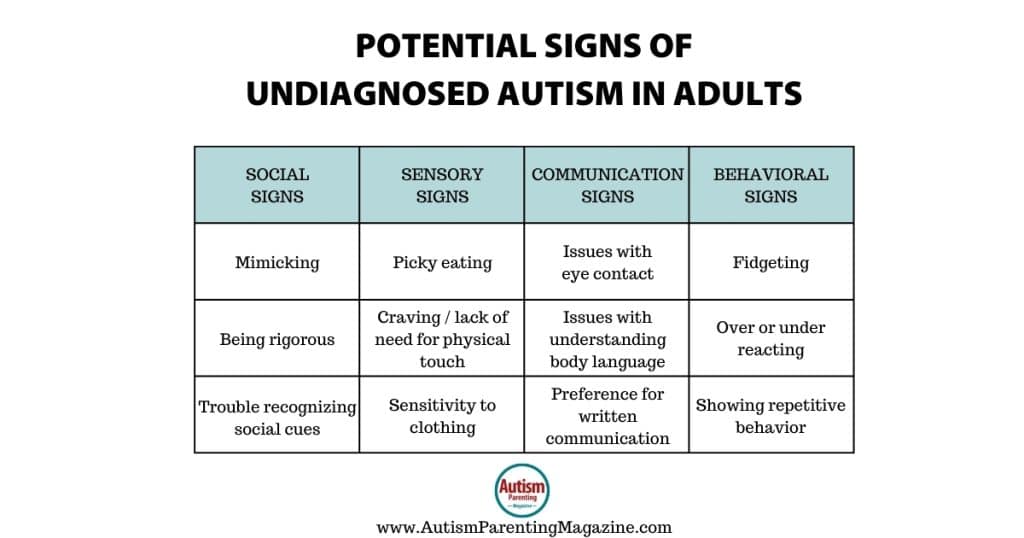Five practical strategies Autism Behavioral Therapy reduce anxiety
Recognizing the Impact of Behavioral Autism on Daily Life and Social Communications
You could not understand just how deeply behavior autism influences every day life and social interactions. People on the range frequently navigate a world loaded with communication obstacles and sensory overload. These difficulties can bring about aggravation and seclusion, affecting their partnerships and overall wellness. Understanding these nuances is important for fostering supportive settings. What methods can we carry out to develop even more purposeful connections and inclusive spaces? The answers might stun you.
Specifying Behavioral Autism and Its Features
Behavioral autism, often described as autism spectrum condition (ASD), encompasses an array of conditions defined by obstacles in social communication, interaction, and recurring actions. You could observe that people with ASD often battle to interpret social signs, which can cause misunderstandings in discussions. They may discover it hard to develop eye contact or participate in small talk, making social circumstances feel frustrating.
Communication troubles can materialize in different ways, from postponed speech growth to a preference for utilizing less words. Repeated actions, such as hand-flapping or rocking, can work as coping devices to manage stress and anxiety or sensory overload. These attributes can profoundly impact day-to-day live, making it necessary for you to understand and support those with ASD. By recognizing these characteristics, you can cultivate an atmosphere that advertises approval and encourages efficient interaction, aiding individuals with autism thrive in their daily communications.
The Range of Autism: Recognizing Irregularity in Actions
Autism range problem (ASD) isn't a one-size-fits-all medical diagnosis; it varies widely among people. You might observe that some people with ASD display mild signs, while others may face more considerable challenges. This variability can manifest in behaviors, interests, and sensory level of sensitivities. You might encounter individuals who are extremely verbal and engage conveniently in discussions, while others might prefer solitary tasks or connect non-verbally.
In addition, the method people with ASD react to sensory input can vary substantially; some may be overwhelmed by bright lights or loud sounds, whereas others prosper in stimulating settings. The spectrum also consists of distinctions in social interactions; some people may struggle to analyze social cues, while others navigate social settings with loved one convenience. Recognizing this variability is vital, as it assists you value everyone's one-of-a-kind experience and dressmaker support to their particular needs, fostering a more comprehensive atmosphere for everybody.
Interaction Difficulties Dealt With by People With Autism
When you connect with individuals on the autism range, you may see their distinct interaction challenges. They often deal with difficulties with both nonverbal and verbal signs, which can impact their social communications. Comprehending these obstacles is vital for promoting far better connections and support.

Verbal Interaction Difficulties
Lots of people on the autism range experience spoken communication problems that can considerably influence their day-to-day communications. You might find it testing to share your ideas, feelings, or needs plainly. This can bring about irritation for both you and those around you, as misunderstandings happen. You may deal with starting discussions, maintaining a subject, or understanding nuances in speech. Commonly, you might prefer utilizing basic language or recurring phrases, which can limit your ability to participate in much deeper conversations. Your volume, tone, or speed might not align with social assumptions, triggering others to misunderstand your intentions. Identifying these challenges can assist you and your assistance network establish methods to boost interaction and cultivate far better connections with others in your life.
Nonverbal Communication Barriers
Verbal interaction isn't the only difficulty people on the autism range face; nonverbal communication obstacles can be just as substantial. You might discover it challenging to interpret body language, faces, and eye call, which are necessary for reliable interaction. These difficulties can result in misconceptions or false impressions of social hints, making communications really feel overwhelming or complex. You may struggle to reveal your own emotions via nonverbal means, leaving others unclear of your sensations or objectives. This detach can develop feelings of isolation and disappointment. Recognizing these obstacles is essential for cultivating understanding and empathy in your communications. By attending to nonverbal communication, you can locate strategies to improve your social experiences and improve your total lifestyle.
Social Interaction Influences
Social communications can commonly feel frustrating as a result of the unique communication challenges faced by individuals with autism. You could battle with interpreting social hints, making it difficult to comprehend mockery or body movement. This can result in misconceptions or uncomfortable moments in conversations. Furthermore, initiating and preserving discussions may really feel difficult, causing anxiety in social situations. You might prefer organized environments, making spontaneous communications unpleasant. It's likewise typical to experience trouble in taking part in little talk, which can hinder developing brand-new relationships. Acknowledging these challenges can aid you locate strategies to boost communication, such as practicing social abilities in safe settings or making use of visual help - Autism Behavioral Therapy. Comprehending your demands enables you to navigate social communications with better self-confidence and ease.
Social Interaction and Connection Building in Autism
While structure relationships can be challenging for individuals with autism, understanding their distinct viewpoints and communication styles can foster significant connections. You might discover that lots of people on the range like straight communication and may deal with social signs or tiny talk. By being simple in your communications, you can aid create a setting where they really feel comfortable.
Involving in shared rate of interests can additionally offer as a bridge to deeper connections. Whether it's a leisure activity, a these details favorite program, or a common enthusiasm, these usual threads can open doors to relationship.
Every Day Life Routine: Navigating Challenges and Approaches
Maneuvering day-to-day life routines can be particularly challenging for people with autism, specifically when unanticipated modifications happen. To browse these challenges, consider implementing visual routines or checklists.
Establishing a routine that includes sensory breaks can likewise be useful. You can plan brief breaks throughout your day to charge. It's necessary to connect with those around you, allowing them understand your requirements and preferences. This assists develop an understanding environment.
Lastly, technique mindfulness strategies to manage anxiety and anxiousness. Simple breathing exercises or basing methods can make a significant distinction. By incorporating these strategies, you can enhance your day-to-day regimen and lessen interruptions, making life feel more convenient.
Strengths and Capacities of Individuals on the Autism Spectrum
Understanding everyday life regimens is simply one aspect of the autism experience. Lots of individuals on the autism range possess impressive strengths and abilities that set them apart.
Additionally, your memory skills frequently radiate, especially in areas of passion. Autism Behavioral Therapy. This flair for keeping info can make you a valuable source in fields like innovation, art, or science. You may also exhibit solid aesthetic reasoning, enabling you to read the full info here envision complex principles and solve issues creatively
Additionally, your one-of-a-kind point of view on the globe can cultivate empathy and understanding in others, enriching social interactions. Accepting these toughness not just boosts your confidence yet likewise assists others appreciate the varied abilities you give the table.
Developing Inclusive Atmospheres for People With Autism
Creating comprehensive environments for individuals with autism starts with creating sensory-friendly spaces that deal with their special needs. You can also cultivate possibilities for social interaction, helping to build connections and friendships. By making these modifications, you'll add to a much index more welcoming atmosphere for everyone.
Designing Sensory-Friendly Spaces
While making sensory-friendly rooms, it's crucial to reflect on the unique needs of individuals with autism. Incorporate peaceful areas where individuals can pull away and charge when bewildered. Consist of aesthetic schedules or clear signs to aid people navigate the room confidently.
Advertising Social Interaction Opportunities
Creating sensory-friendly areas not just addresses private comfort yet additionally establishes the phase for purposeful social communications amongst individuals with autism. To advertise these communications, produce comprehensive settings that welcome involvement. Arrange structured tasks, like art courses or team video games, that motivate cooperation without overwhelming sensory input. Use visual help and clear interaction to help everyone involve easily. Motivate peer mentoring, matching people with autism with supportive peers that can lead them with social circumstances. Additionally, consider holding normal community events that celebrate neurodiversity, cultivating approval and understanding amongst all participants. By implementing these approaches, you can boost social possibilities, assisting people with autism develop friendships and reinforce their social skills in a risk-free, welcoming atmosphere.

Regularly Asked Inquiries
How Can Buddies Assistance A Person With Behavioral Autism?
You can sustain a close friend with behavior autism by holding your horses, paying attention actively, and valuing their limits. Participate in activities they delight in, connect honestly, and create a comfortable environment where they really feel valued and comprehended.
What Resources Are Available for Moms And Dads of Kid With Autism?
You can explore different sources for moms and dads of youngsters with autism, consisting of assistance teams, instructional sites, and regional area services. Getting in touch with various other parents can also supply valuable understandings and shared experiences to help browse obstacles.
Can Behavioral Autism Modification Over Time?

Yes, behavioral autism can alter in time. You may observe shifts in communication, social skills, and habits as your kid expands. Early treatment and support usually play important functions in these developmental adjustments.
How Do Sensory Level Of Sensitivities Affect Day-to-day Live?
Sensory level of sensitivities can make day-to-day experiences overwhelming. You may battle with intense lights or loud sounds, bring about stress or evasion. Discovering settings that fit your demands can greatly improve your convenience and total every day life.
What Are Typical Misconceptions Concerning Behavioral Autism?
You could assume behavioral autism only impacts communication abilities, but it's even more facility. Numerous think people lack empathy or intelligence, which isn't true. Comprehending these false impressions helps foster acceptance and assistance for those on the range.
Behavioral autism, commonly referred to as autism spectrum condition (ASD), incorporates an array of problems identified by challenges in social communication, interaction, and recurring actions.Social interactions can typically really feel overwhelming due to the unique communication challenges encountered by individuals with autism.Designing sensory-friendly areas not only addresses individual convenience however additionally sets the phase for significant social communications among individuals with autism. Motivate peer mentoring, pairing individuals with autism with supportive peers who can lead them through social scenarios. By applying these techniques, you can boost social opportunities, assisting individuals with autism develop friendships and reinforce their social skills in a risk-free, welcoming setting.